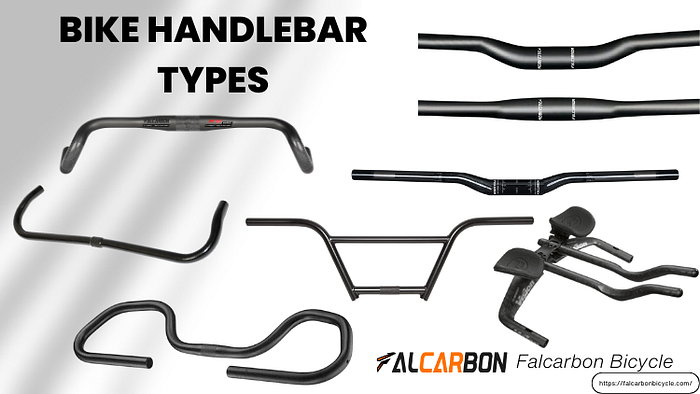Bike Handlebars Explained – Find Your Perfect Fit
When I first got into cycling, I thought handlebars were just… well, handlebars. Something to steer with, maybe lean on when I’m tired. But after riding through cities, across mountain trails, and on long touring routes, I’ve come to realize how critical handlebar choice really is. It’s not just about how they look — it’s about how they feel, how they guide your posture, and how they impact your performance and comfort.
Whether you’re grinding up steep off-road climbs or cruising city streets, the right handlebars make a massive difference.

Why Handlebar Types Matter (From My Saddle)
Take it from someone who’s ridden with just about every bar out there: handlebars are the unsung heroes of your ride. They affect your posture, wrist comfort, balance, even your speed and efficiency. For example, when I’m commuting, flat bars give me great visibility and control in traffic. But when I’m racing or going for distance, drop bars are a no-brainer — they’re aerodynamic, offer multiple grip positions, and let me really settle into the ride.
And for those relaxed weekend beach rides or easy neighborhood cruises? Nothing beats a wide, swept-back cruiser bar. It’s like kicking back in your favorite chair — but on two wheels.
Each type of handlebar is suited to a different kind of rider and terrain, and after years of trial and error, I’ve learned which ones match my needs best depending on the day. So let me walk you through the types I’ve used — and maybe help you find your match, too.
Flat Bars — My Go-To for Urban and Trail Riding
Flat bars were the first handlebars I ever used, and honestly, I still come back to them when I’m zipping around town or tackling rough trails. They’re simple, straight, and offer solid control. On mountain trails, they help me feel planted and in charge. In the city, they give me a clear view ahead.
Most are made of aluminum, but the carbon fiber versions I’ve used recently are lighter and soak up vibration better — a game-changer for longer rides or rocky paths.
Drop Bars — Speed and Versatility on the Road
When I started riding longer road routes, I quickly realized the value of drop bars. Their curved design lets me switch up my grip depending on the terrain or fatigue. I can tuck in when I need to be aerodynamic or relax on the top when cruising.
My carbon drop bars are lightweight and help reduce road buzz — especially important on long endurance rides. If speed, efficiency, and hand position variety are what you need, these are a solid pick.
Riser Bars — Control and Comfort Off-Road
I swapped out flat bars for riser bars on my trail bike a while ago, and I haven’t looked back. These bars give me a more upright position, which is great for visibility and handling on uneven terrain. I especially appreciate them on technical descents — they give me a feeling of stability I don’t get from lower bars.
A set of carbon riser bars also helps with shock absorption on steep or bumpy rides. That combo of comfort and control makes them a favorite for downhill or casual mountain rides.
Bullhorn Bars — Power and Speed in the City
Bullhorn bars are a bit more aggressive. I use them when I want to sprint hard or climb with leverage, like on my fixed-gear bike. They’re not ideal for long-distance comfort, but for quick, powerful rides through city streets, they’re unbeatable.
I went for a carbon bullhorn bar to keep things light and responsive. If you’re looking to add style and sprint efficiency to your urban ride, these are worth trying.
Cruiser Bars — Laid-Back Vibes and Comfort
Sometimes, I just want to ride without thinking about cadence or speed — just me, the breeze, and the road. That’s where cruiser bars shine. Their wide, swept-back shape supports a natural wrist angle and upright posture, making them perfect for casual, scenic rides.
I have a cruiser bike with these bars for weekend relaxation, and although they’re heavier and not built for performance, I wouldn’t change a thing.
My Takeaway
In my journey as a cyclist, I’ve realized there’s no “best” handlebar — only the one that fits you: your riding goals, your terrain, your comfort level.
But if you’re like me and care about performance and lightweight feel, keep an eye on brands like Falcarbon. Their carbon fiber handlebars have really impressed me lately. Whether it’s drop bars for road cycling or riser bars for trail riding, their components strike a nice balance between stiffness, shock absorption, and sleek design.
In the end, handlebars are more than just steering tools. They’re an extension of your riding style. So don’t underestimate how much they matter — try a few, ride a lot, and find the one that feels like it was made for you.
Read Also: Bike Handlebar Types.
Comments
Post a Comment